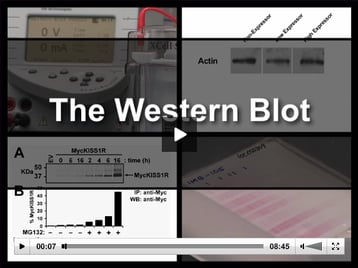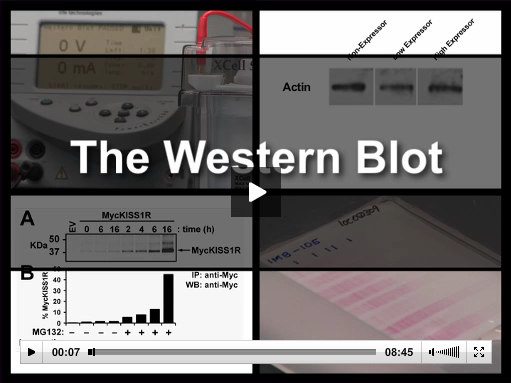Thank you for checking out our “30 days of Science Education” series. Use Science Education videos to introduce undergraduates to the lab.
Struggling to get your Western Blot to work? Today we highlight our demonstration of this very method! We'll discuss the process of transferring proteins to a membrane, probing that membrane with antibodies, and then detecting the signal.
 Our demonstration of the Western Blot, part of JoVE's Science Education "Basic Methods in Cellular and Molecular Biology" collection.
Our demonstration of the Western Blot, part of JoVE's Science Education "Basic Methods in Cellular and Molecular Biology" collection.
Western Blotting is a powerful technique used by many researchers to identify the presence of specific proteins in an electrophoretically-separated sample using antibodies. In this JoVE video, we introduce and show how to perform the three principle stages of this technique: Electroblotting, Immunoblotting, and Detection.
Please note! On Monday we introduced SDS-PAGE, a technique used by researchers to separate mixtures of proteins by size. In order to execute your Western Blot, you may need to reference that video again. Before beginning your blot, SDS-PAGE must be performed to separate denatured proteins by size in a polyacrylamide gel.
Interested in learning more about the applications of the Western Blot on the frontline of science research? After watching this video, scroll down to view experiments that incorporate this method—demonstrated by institutions such as the Max-Planck-Institute of Immunology and Epigenetics and the University of British Columbia.


